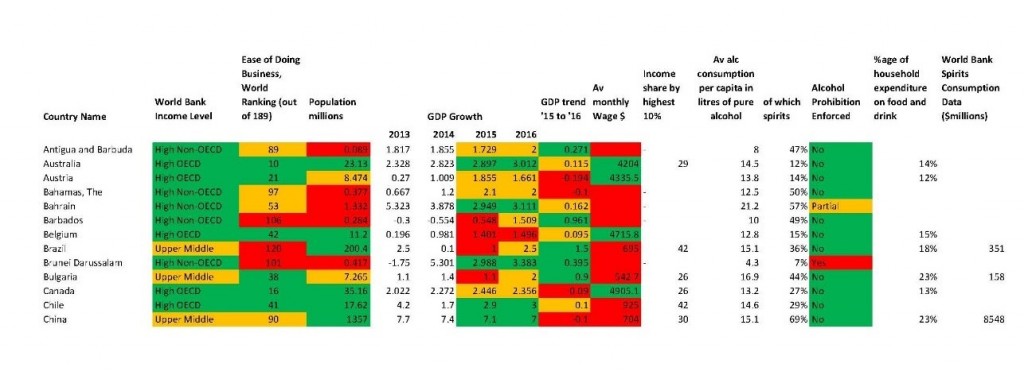When companies approach us looking for support, they have a clear objective of entering or at least assessing Latin American markets. Before working with them, we do evaluate whether we think they are ready for the region (and whether the region is ready for them!). What we don’t know is why they chose Latin America and not another region, or why they chose, say, Peru and not Vietnam, or Argentina and not South Africa.
That’s why I am delighted to welcome Jim Fanshawe from Your Export Department to our blog, to discuss how to choose an export market.
 “As we all know the UK’s position in the trading world may be about to change. Having a mechanism for selecting your next export target market will help you enter that market with a higher level of confidence.
“As we all know the UK’s position in the trading world may be about to change. Having a mechanism for selecting your next export target market will help you enter that market with a higher level of confidence.
With over 196 countries in the world to choose from it is easy to see why having a proven methodology is so important. Entering a new export market takes considerable time and determination. There will be a degree of investment required also. It is important that you know that you’re selecting the right markets in order to enhance your chance of export success.
At Your Export Department we advocate a phased approach to export strategy. It helps us break down the task into bite sized chunks. The phases are Strategic, Tactical and Operational and we call it our STO approach for short. In this piece we focus on the Strategic Phase (to download some slides to demonstrate this approach please click here). If Latin American companies get highlighted in your analysis then Sunny Sky Solutions will be able to help with the Tactical Phase. This blog piece focuses on the Strategic Phase.
Strategic Phase
Start off by assessing what it is that makes a market attractive to you. There will be economic issues, competitor pricing reviews, country level issues, consumer criteria which may include cultural, social and demographic issues. Then add in the practical criteria you wish to assess such as legislation (product level and political level), ease of doing business, duties, shipping time and logistics. So this phase is all about asking what criteria must a given market have in order to make it attractive to me. A growing middle class with increasing disposable income will be important to some, whereas an active government investment scheme in infrastructure may be more important to others. Also in the Strategic Phase consider how many new export markets it is realistic to handle at one time given the resources available.
Once the criteria has been set for what it is that makes an overseas market attractive the work can be done to gather the data. Try using a ‘Gateway’ system to do this. A snapshot of this is shown below using old GDP data for illustrative purposes and was done for a drinks industry client. A country only makes it through to the next “Gate” if it meets a certain level. This then enables you to narrow down the markets using a traffic light system.
When the list gets to a manageable number start comparing and ranking the remaining markets to create a priority list. Decide how much weighting to give each criteria. For example decide if you place more importance on population size than you do on state of the economy and rank accordingly. Additional criteria can be added in at any point if necessary. Certain markets may perform differently in the post Brexit world when considerations such as legislation, import duties and administrative burdens are compared.
Your Export Department’s “Gateway” System:

Tactical Phase
Having selected your markets the tactical phase is next and focuses in on a market entry plan. Market entry plans in some countries may look different post Brexit. The tactical phase is about researching and developing your route to market and Sunny Sky Solutions are ideally placed to do this for you in Latin America.
Operational Phase
The third phase is called the Operational Phase. It is a key area when assessing new export markets and needs to be carried out in conjunction with the Strategic and Tactical Phases so as to be prepared. It covers areas such as financing export development, Letters of Credit, FX, Incoterms, documentation, capacity, admin burden and travel. These are some of the things to consider when thinking about the impact a new market entry will have on the company’s operations.”
Do you have a methodology for choosing new export markets?
What indicators or factors do you take into account? How rigorous is your approach? Leave us your comments below and feel free to connect with Jim on LinkedIn.
